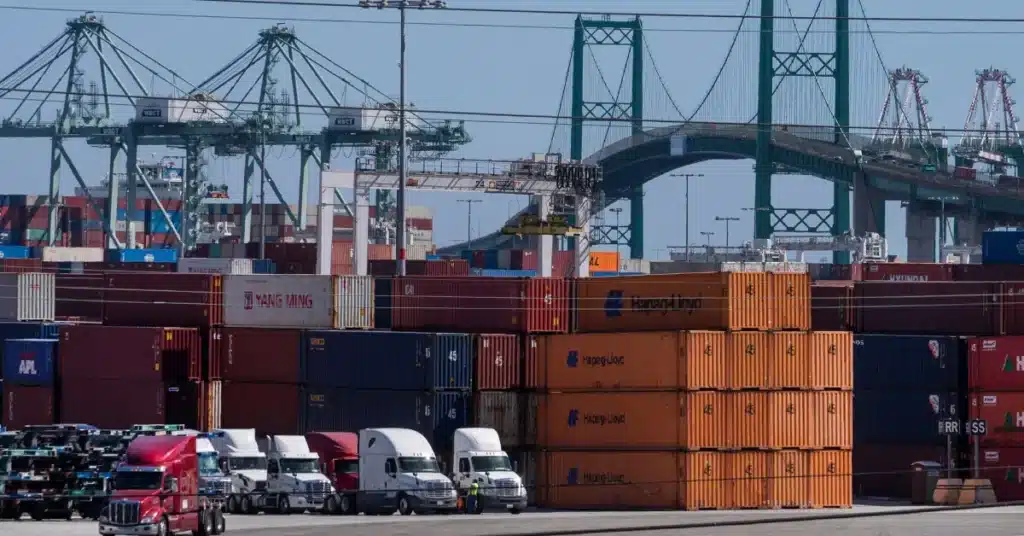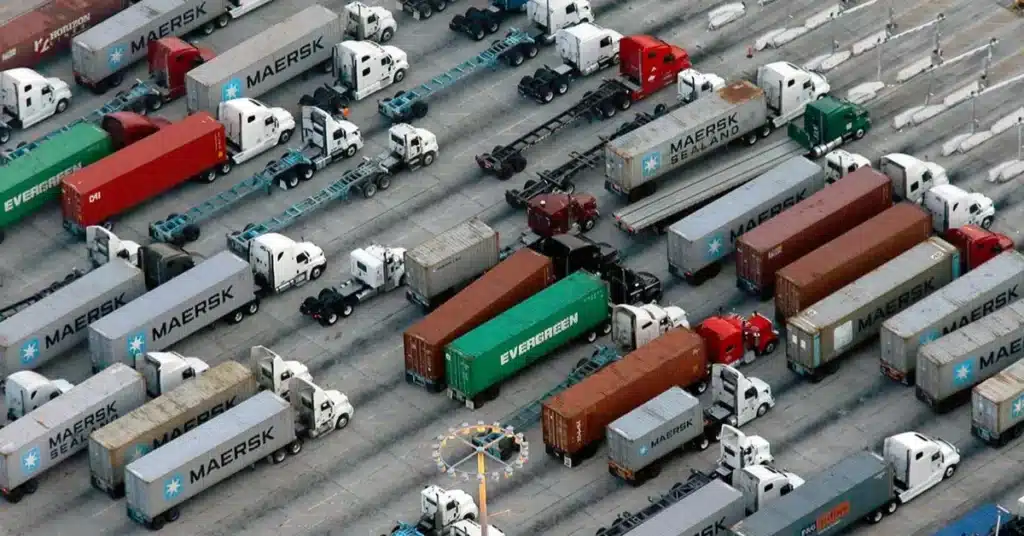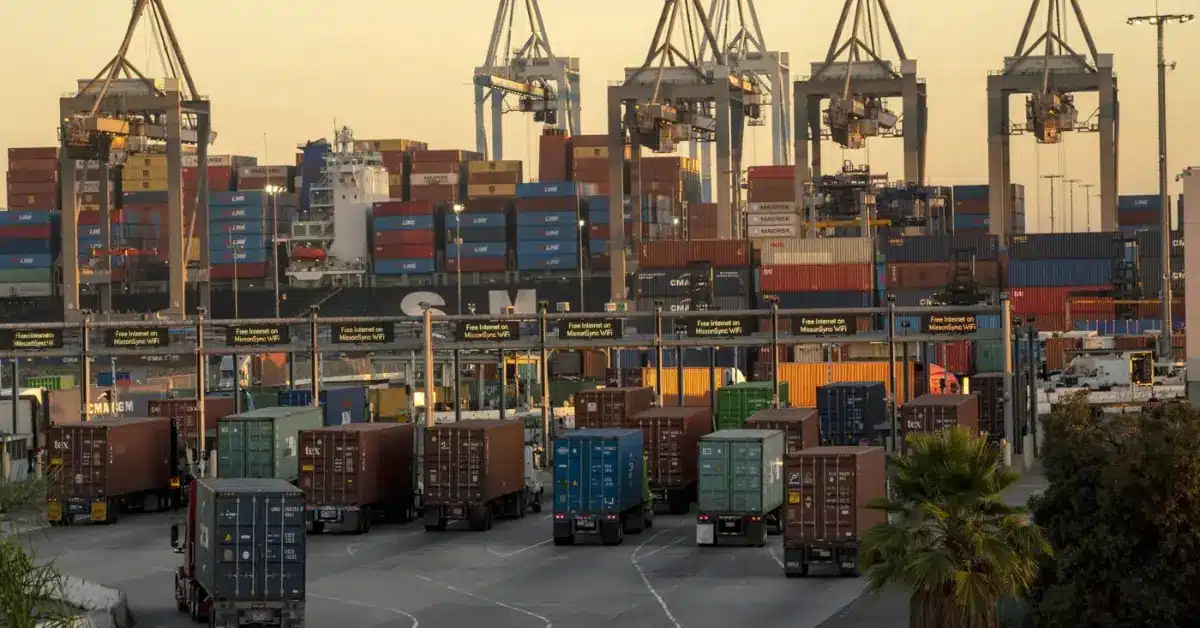Tariff Turmoil: Navigating the Ripple Effects on U.S. Ports and Global Supply Chains
Table of Contents
In early 2025, the U.S. administration implemented a series of sweeping tariffs, including a baseline 10% duty on all imports and significantly higher rates on goods from specific countries, such as a 54% tariff on Chinese imports. These measures, part of the so-called “Liberation Day” tariffs, were aimed at addressing trade imbalances and encouraging domestic manufacturing. However, they have introduced substantial volatility into global trade dynamics, particularly affecting U.S. ports like the Port of Los Angeles, and have had far-reaching implications for supply chains worldwide.
Surge in Imports Ahead of Tariff Deadlines
Anticipating the imposition of new tariffs, importers accelerated shipments to U.S. ports to avoid increased costs. The Port of Los Angeles reported handling 778,406 Twenty-Foot Equivalent Units (TEUs) in March 2025, marking a 4.7% increase compared to the same month the previous year. This surge brought the port’s first-quarter total to over 2.5 million TEUs, up 5.2% from 2024’s already strong performance.
This front-loading of imports was a strategic move by businesses to stockpile goods before the tariffs took effect, leading to temporary spikes in port activity and inventory levels across the country.
Rise in Empty Container Movements
While import volumes surged, export activity did not keep pace. In March 2025, loaded exports at the Port of Los Angeles decreased by 15% compared to the previous year. Port of Los Angeles This imbalance resulted in a significant increase in empty container movements, as containers brought in with imports had to be repositioned without corresponding export loads.
The accumulation of empty containers has strained port storage capacities and logistics operations, leading to increased operational costs and inefficiencies in the supply chain.

Operational Strains on Port Infrastructure
The influx of imports and the surge in empty containers have placed considerable pressure on port infrastructure. Terminals are experiencing congestion, extended dwell times, and increased turnaround times for vessels. Labor demands have intensified, and equipment utilization rates have soared, challenging the capacity of ports to maintain efficient operations.
Port authorities are working to mitigate these issues by optimizing terminal operations, coordinating with shipping lines, and exploring technological solutions to enhance cargo handling efficiency.
Global Supply Chain Repercussions
The U.S. tariffs have disrupted established global supply chains, prompting companies to reevaluate sourcing strategies and production locations. Many businesses had begun shifting manufacturing from China to Southeast Asian countries like Vietnam, Thailand, and Malaysia to diversify risk. However, the extension of tariffs to these nations has complicated these efforts, leading to increased costs and uncertainty.
These disruptions have affected demand forecasting and inventory planning, as companies struggle to adapt to the rapidly changing trade environment.
Adaptive Measures by Logistics and Freight Companies
In response to the evolving trade landscape, logistics and freight companies are implementing adaptive measures to maintain supply chain resilience. Strategies include diversifying supplier bases, investing in technology for better visibility and tracking, and exploring alternative transportation routes to circumvent congested ports.
Companies are also engaging in scenario planning to anticipate potential trade policy changes and their implications, allowing for more agile responses to future disruptions.

Economic Implications and Forecasts
The tariffs have broader economic implications, contributing to increased costs for businesses and consumers. Analysts warn that the added expenses from tariffs may lead to higher consumer prices, reduced corporate profits, and potential slowdowns in economic growth.
Economists have raised concerns about the possibility of a recession, with some forecasting a significant impact on GDP growth due to the compounded effects of trade disruptions and market volatility.
Conclusion
The implementation of extensive tariffs in 2025 has led to significant shifts in U.S. port operations and global supply chains. While intended to bolster domestic industries, these measures have introduced complexities and challenges that businesses and logistics providers must navigate. Adaptability, strategic planning, and investment in resilient infrastructure and technologies will be crucial for mitigating the adverse effects and ensuring the continued flow of goods in this new trade environment.





